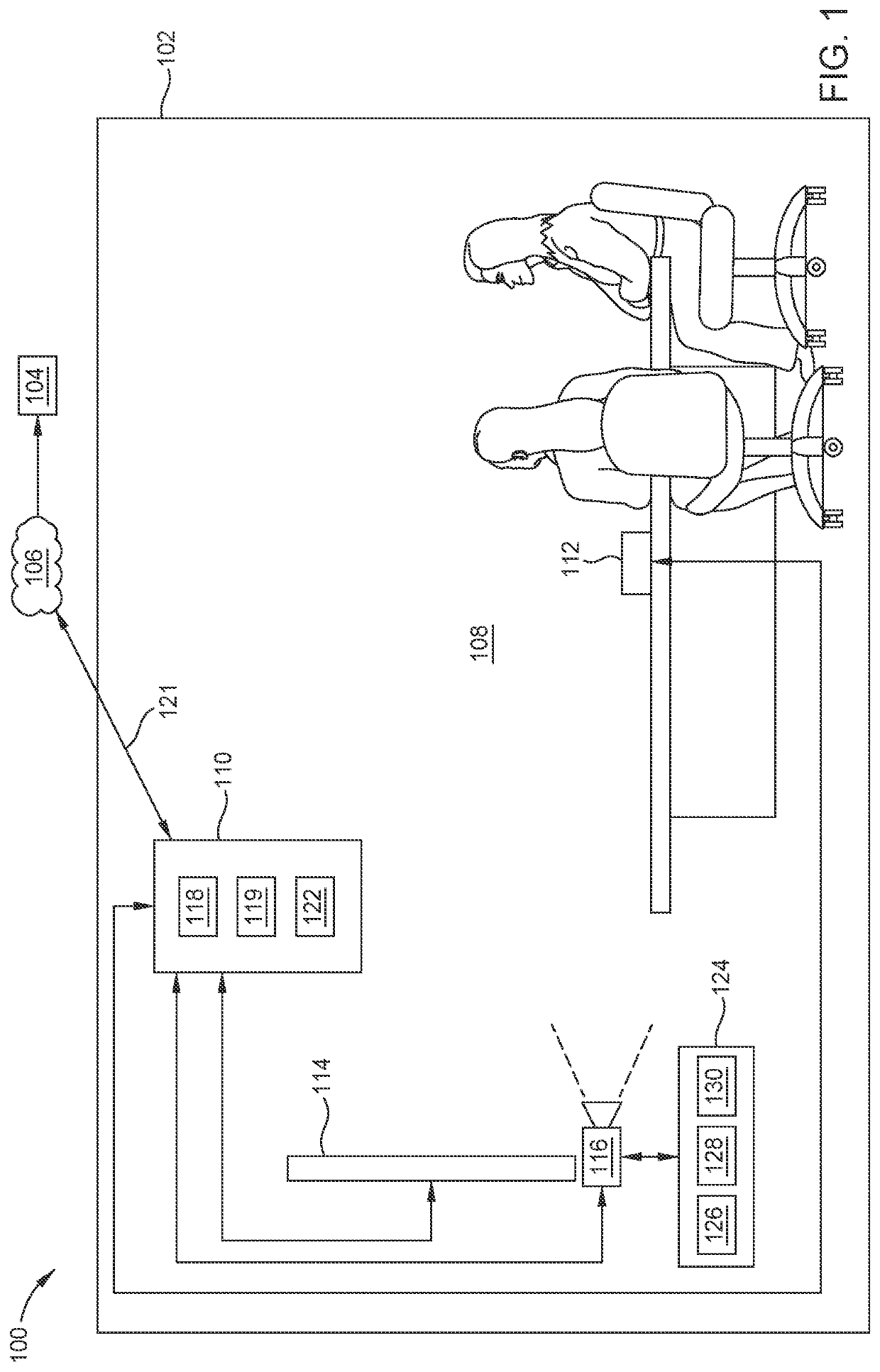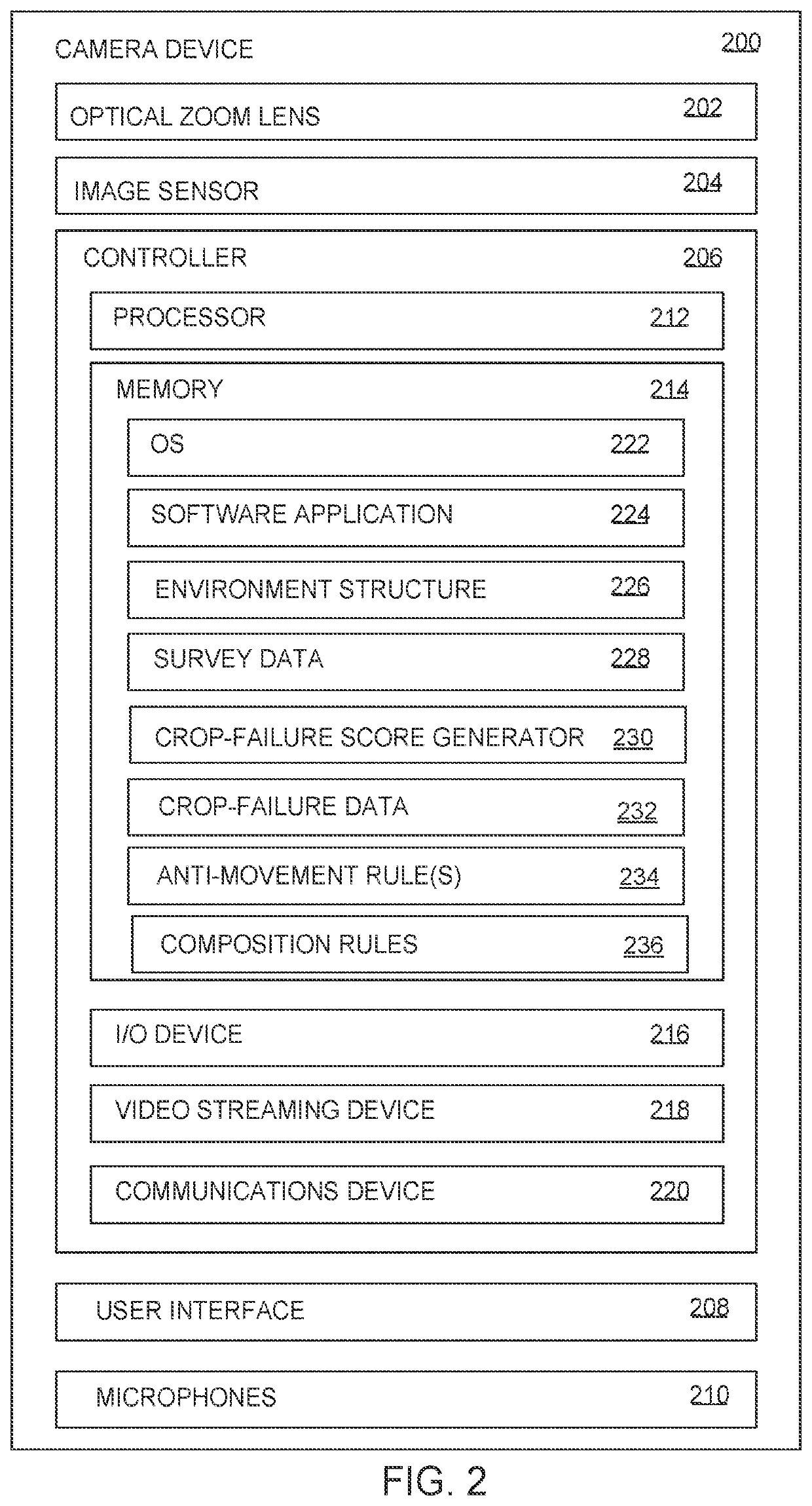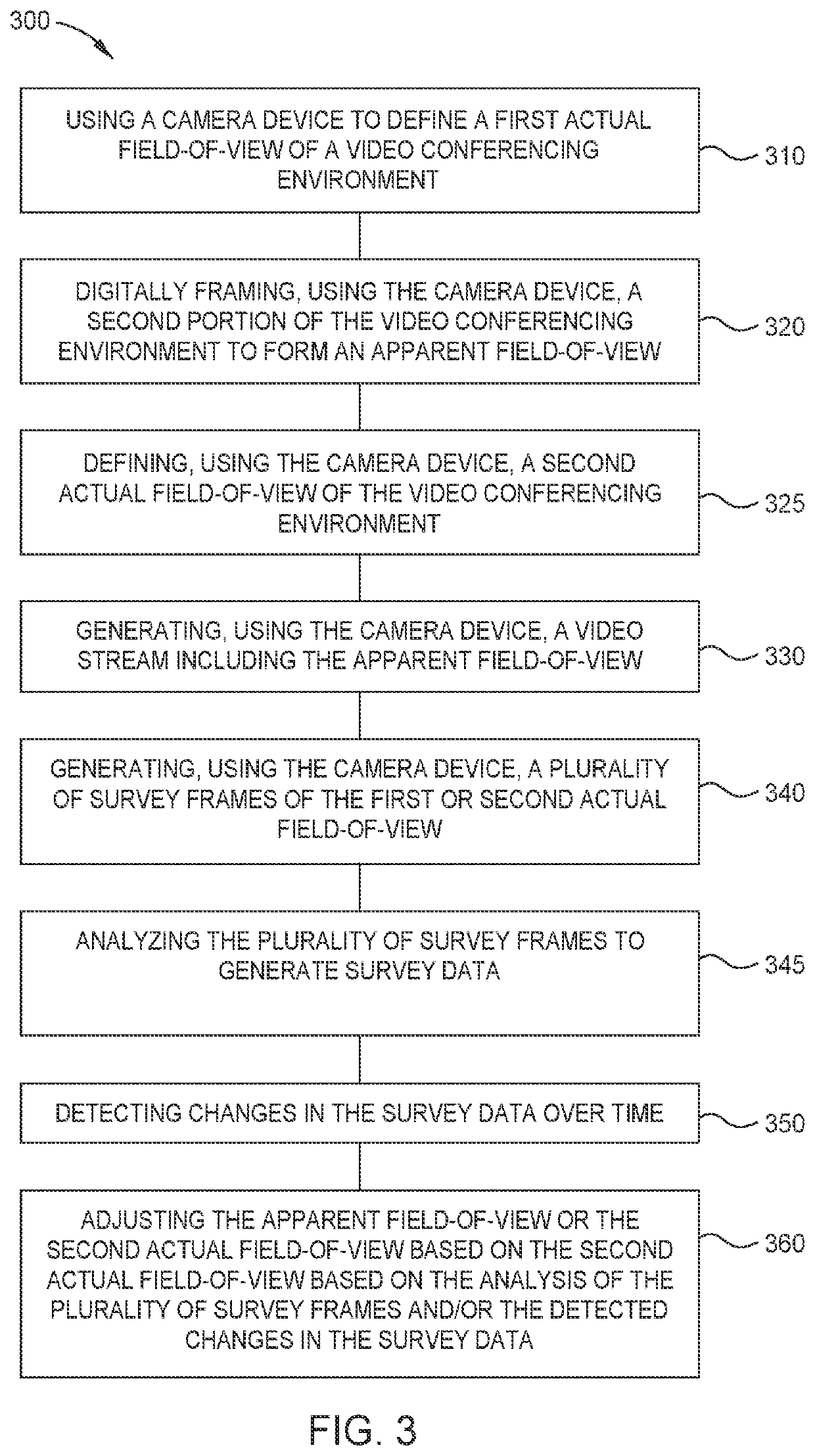Advanced video conferencing systems and methods
a video conferencing and advanced technology, applied in the field of advanced video conferencing systems, can solve the problems of inconvenient adjustment of video stream, increased cost, time and cost of such a two-camera system, and no longer useful for monitoring areas outside the frame space for changes in information, etc., to prevent frequent adjustments.
- Summary
- Abstract
- Description
- Claims
- Application Information
AI Technical Summary
Benefits of technology
Problems solved by technology
Method used
Image
Examples
Embodiment Construction
[0033]Organizations of every kind have embraced video conferencing technology to fulfill at least a portion of their communication needs. As the proliferation of video conferencing systems increases so do user expectations related to the essential video and / or audio content exchanged between video conferencing sites, equipment cost, and usability. Thus, embodiments herein provide systems and software implemented methods that are configured to provide desired video conference content that is delivered at a lower cost compared to existing systems, and configured for seamless integration with readily available video conferencing software applications, such as Microsoft® Skype®, Apple® FaceTime® and applications available from Zoom® Video Communications, Inc. Some embodiments provided herein include systems and software that enable advanced auto-framing methods to be used during a video conference.
[0034]In one example, embodiments herein provide for digitally framing a portion of a vide...
PUM
 Login to View More
Login to View More Abstract
Description
Claims
Application Information
 Login to View More
Login to View More - R&D
- Intellectual Property
- Life Sciences
- Materials
- Tech Scout
- Unparalleled Data Quality
- Higher Quality Content
- 60% Fewer Hallucinations
Browse by: Latest US Patents, China's latest patents, Technical Efficacy Thesaurus, Application Domain, Technology Topic, Popular Technical Reports.
© 2025 PatSnap. All rights reserved.Legal|Privacy policy|Modern Slavery Act Transparency Statement|Sitemap|About US| Contact US: help@patsnap.com



